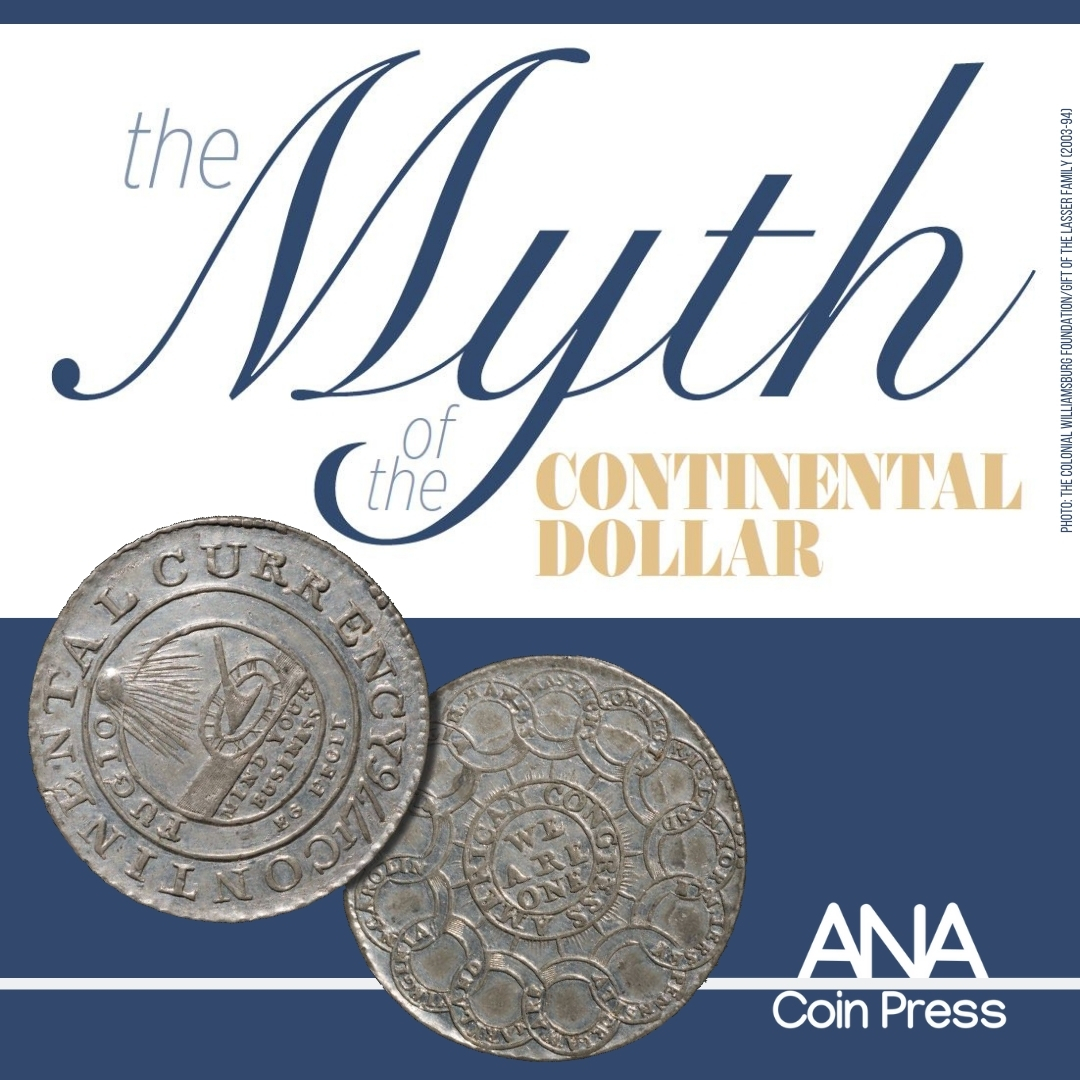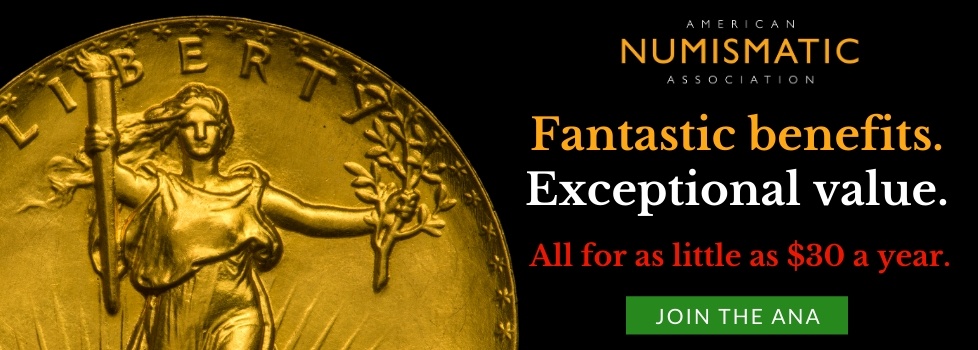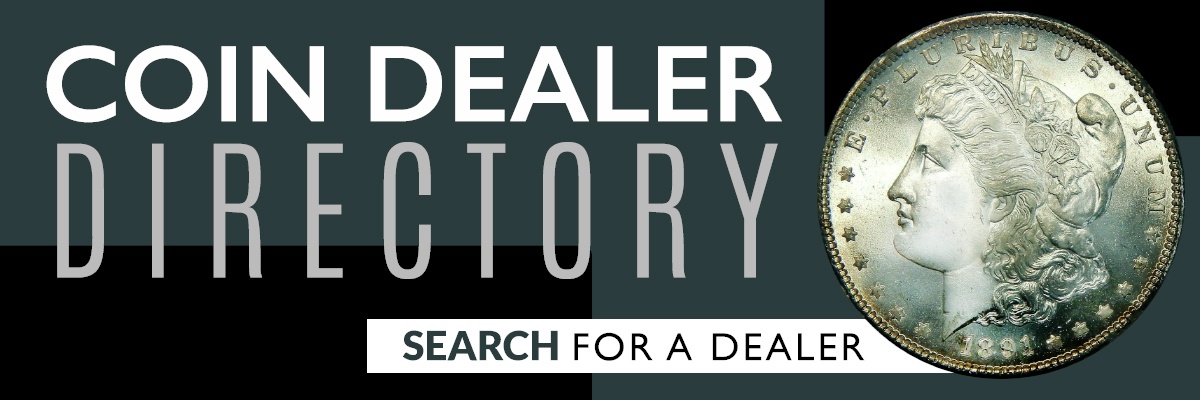The Myth of the Continental Dollar: Part One
Originally published in The Numismatist, January 2018
A fresh look at contemporary sources reveals some surprising facts behind the creation of America’s favorite colonial coin.
As you read this, hundreds of brand-new, 1776-dated “Continental Currency” coins are for sale at dozens of historic sites across the United States. Accepted as the top numismatic relics of the American Revolution, originals are among the most beloved coins, and replicas have been popular souvenirs for ages. Their devices and mottoes, the brainchildren of Benjamin Franklin, are perfect, enduring symbols of the era, making these pieces as intoxicating and seductive as a siren’s song.
But do we really know what we think we know about the Continental Dollar1 and its origins? What if some wishful thinking, speculation and human error has crept into the canon of numismatic literature over the past few decades and obscured the true story? Should the absolute non-existence of this metallic issue in the records of the Continental Congress be heeded as an often trivialized but stern warning to aspiring believers and collectors?
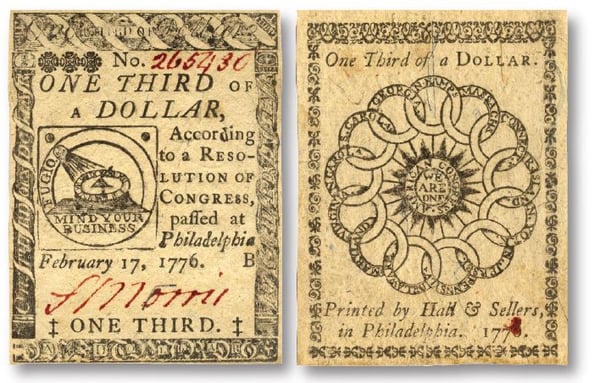
▲ THE CONTINENTAL CONGRESS issued paper notes from 1775 to 1779, among them this third of a dollar. Photos: the Colonial Williamsburg Foundation/Gift of the Lasser Family (1994-210.45)
We all know that a frequently repeated theory tends to gain traction over time, often morphing into generally accepted fact. This seems to be the case with the Continental Dollar. But maybe it’s time for a fresh look at the plain facts, which is the intended goal of this article. Stripped bare, the truths behind the creation of these pieces are sure to raise some eyebrows.
Let’s start this exploration by leaving the standard numismatic references on the shelf and heading right for the “primary sources.” These are the original words written, or not written, about the Continental Dollar during the time of its creation and initial availability, taken strictly from those familiar with the coins and the official entity that is supposed to have issued them. As such, these contemporaneous testimonies represent the most credible form of historical information on this subject.2
Numismatic Titans of the 18th Century Weigh In
Students of numismatic history will be familiar with a pair of Georgian-era collectors who had a tremendous impact on the field from opposite sides of the Atlantic: Pierre Eugene du Simitière (1737-84) and Sarah Sophia Banks (1744-1818). The former rightfully has been described as the “Father of American Numismatics,”3 while the latter can be thought of as the matron of the British Museum’s numismatic holdings. Both 18th-century luminaries put pen to paper and had similar things to say about the Continental Dollar. As celebrated numismatists who were actively collecting during the Revolutionary period, their words carry substantial gravitas and should be taken, perhaps, above all others.

▲ DU SIMITIÈRE created this portrait of Charles Thomson, secretary to the Continental Congress. Works like this, and the artist’s portraits of George Washington and Gouverneur Morris, among others, establish du Simitière’s connections with America’s leaders. Illustration: Erik Goldstein Collection.
A Swiss national living in America since the early 1760s, du Simitière was an artist, historian, consummate collector and one of the true pioneers of American numismatics. In fact, if you are familiar with the State Seals of New Jersey and Delaware, then you have seen some of his work. After finally settling in Philadelphia in 1774, du Simitière continued collecting coins and American historical documents, while creating superb miniature portraits to help pay the bills. He was quickly accepted into the upper echelon of American society and became well known to many of the prominent personalities in Philadelphia and other big cities, like New York.
Once America declared its independence, du Simitière re-doubled his efforts, collecting materials toward the compilation of an “official” history of the United States. In fact, his work was deemed significant enough for the Continental Congress to consider a Resolution appointing du Simitière as “Historiographer to the Congress of the United States,”4 though it never came up for a vote.
Unfortunately, du Simitière died in October 1784 before he could complete his historiographical work. To settle his estate, his vast collection of coins, books and papers, as well as the contents of his private museum of natural history, were sold at auction in Philadelphia.5 Today, there are significant repositories of his papers at the Library Company of Philadelphia and the National Archives in Washington D.C.
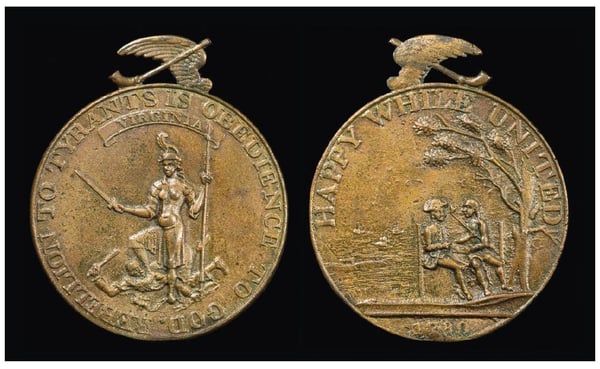
▲ AN EXAMPLE of this 1780 cast brass Indian Peace medal was presented to du Simitière by his friend Colonel Isaac Zane, a fellow collector and the proprietor of the Marlboro Furnace. Only a handful of these Virginia issues are known. Photo: the Colonial Williamsburg Foundation (Purchase partially underwritten by the Lasser Family Fund of the Jewish Communal Fund: 2009-6)
Among the holdings of the latter are two texts of utmost importance to this subject. The first is du Simitière’s chronological list of the coins, medals and paper notes he acquired between August 1775 and December 1783, detailing 137 separate entries.6 Clearly a voracious and astute collector, du Simitière noted in his memorandum nine pieces of Massachusetts silver, seven Higley coppers and a Lion & Wolf medal, along with other material we’d all kill for. Most important to our examination, no Continental Dollar was listed. Thus, du Simitière hadn’t acquired one by the end of 1783, more than seven years after their supposed date of striking. Curious, eh?
But wait, there’s more. Du Simitière also had a plan in the works to publish a history of the American colonial period and the Revolution entitled Common Place Book, 1775-1784, illustrated by “Medals, Seals, Coins, Devices, Statues, Monuments, Badges, &c…”7 Appearing at the end is a list of intended plates, including many familiar treasures like Comitia Americana medals and a Virginia “Happy While United” medal of 1780. Entry No. 18, though, is of great interest to us:
A coin of the Size of a Crown, with devices and Mottos taken from the continental money, Struck’t in London on Type-Metal, and dated 1776.
Are we to believe that a historian and collector of du Simitière’s stature and awareness, with so many ties to the Continental Congress, was unable to collect an example of the pewter (that is, “Type-Metal”) money purportedly issued by that very governmental body? Could he have been so grossly mistaken about the piece’s true origin? How would you like to buy a bridge in Brooklyn?
Directing our attention across the ocean to London, we next delve into the ledgers left by Sarah Sophia Banks.8 Completed by 1815 and augmented until her death in 1818, these eight volumes detail the 9,000 numismatic items she collected, now fundamental cores of the collections at the British Museum and the Royal Mint Museum.9 First listed in Banks’ pre-1790 catalogue of acquisitions,10 the Continental Dollar in her collection was described as
Congress Dollar. 1776. never current, struck on speculation in Europe, for sale in America…
Toward the end of her life, Banks was tidying up the documentation of her legacy and had occasion to mention this enigmatic piece once again in a new ledger, this time adding further fuel to our collective fire.11 Added to her restatement of what she believed about these pieces, in her own hand, is a tipped-in flyer, measuring 6 1⁄8” x 43⁄8,” carrying these typeset words:
These American MEDALS at
Six-Pence Each
N.B. Representing the Paper Currency of a
Dollar, which goes for
Four Shillings and Six-pence in that Country.
EXPLANATION
The Thirteen Colonies united like a Chain, with
the Names of each on the Ringlets, the Words,
“AMERICAN CONGRESS” within, in the Center,
“WE ARE ONE” and with Rays of the Sun
shooting to each Ringlet, as a Glory.
The Reverse is the Sun going round its Orbit,
with a Motto “FUGIO” signifying, I fly:
under the Dial is “MIND YOUR BUSINESS.”
The Date, 1776, is the time they
declared Independency.
The Letters E.G, FECIT, its maker’s Name.
As was customary during the 18th century, certain medals—especially those with allegorical representations that might not have been easily understood on their own—were sold with descriptive flyers. Such was the case with a number of medals struck in Europe that commemorated the end of the Revolutionary War, and the Treaty of Paris.12 This ephemeral leaflet, carefully preserved by Banks, is perhaps the only surviving explanatory flyer that originally accompanied the sale of one of these “Congress Dollars.”
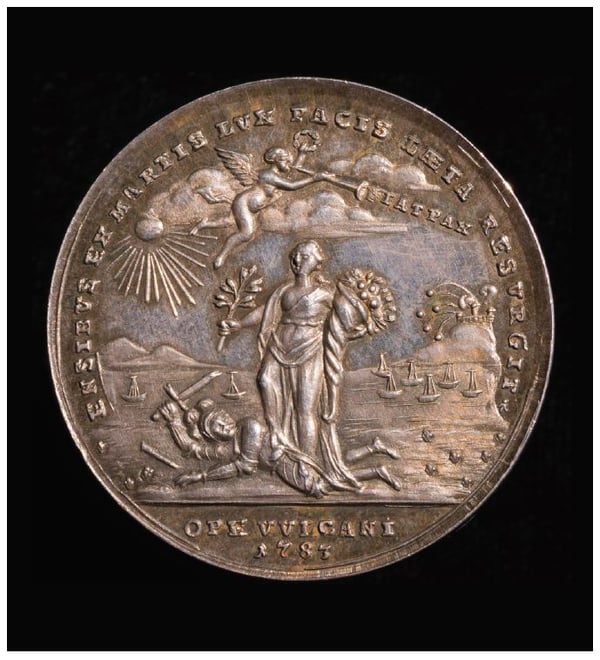
▲ THIS 1783 GERMANIC MEDAL (Betts-610) marking the Treaty of Paris was accompanied by an explanatory flyer (below), similar to the one produced for the Continental Dollar. Struck in silver, the medal also was issued in white metal. Photo: the Colonial Williamsburg Foundation/Gift of the Lasser Family (2008-46.168); Colonial Williamsburg, Museum Purchase (2009-68)
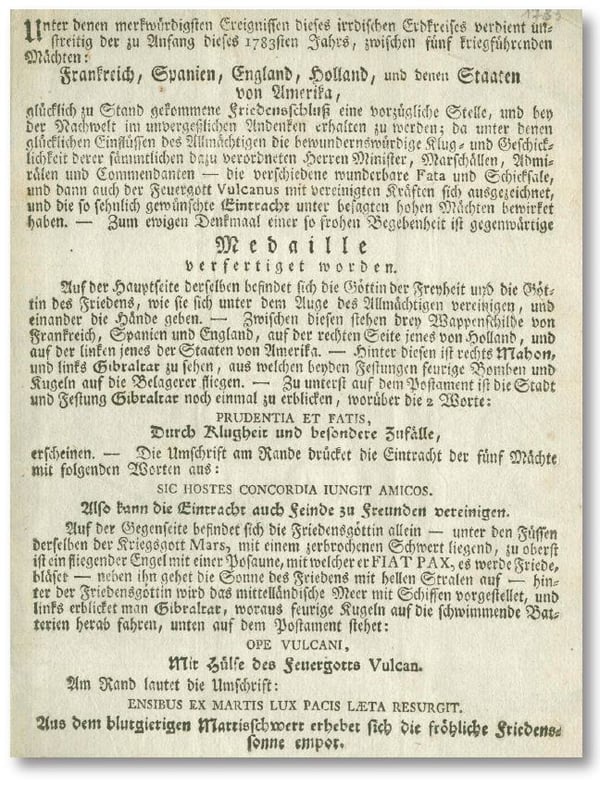
Men of Letters, Science & Industry Go on the Record
Long before Robert Morris had acquired the moniker “Financier of the American Revolution,” the Scottish-born merchant was active in colonial Pennsylvania’s politics. Naturally, his abilities and accomplishments were the reasons he was elected to represent that colony in the Continental Congress in 1775. Serving for three years, Morris was involved in the highest levels of finance and was right there in the American capitol in 1776, yet his writings never mentioned an attempted coinage of that year.
Morris’ next posting, in 1781, was made in his role as the United States’ first Superintendent of Finance. Investing his own treasure in the future of this country, Morris also set about devising a new system of coinage for the fledgling nation as the Revolutionary War was winding down. In diarizing a numismatically monumental event on April 2, 1783, Morris recorded the receipt of the initial prototype as:
a Piece of Silver Coin being the first that has been struck as an American Coin.13
On the whole, Morris clearly was unaware of the so-called Continental Dollar coins, which begs the question: how can anyone accept these pieces as anything approaching “official” when a man of Morris’ position knew nothing of them?

◀ DANIEL BERGER included a rendering of the Continental Dollar in his HISTORISCH-GENEALOGISCHER CALENDAR (1783). Illustration: Library of Congress
Receiving much attention in numismatic print of late is the earliest datable image of the Continental Dollar. Appearing in a 1783 printing of Historisch-geneologischer Calendar14 was Daniel Berger’s crystal-clear engraving of the piece, albeit with German legends in place of the actual English ones. Obviously, this substitution was made for the benefit of its intended local audience.
True, Charles Spener of Berlin, then compiling a history of the United States,15 wrote to Benjamin Franklin (who was in Paris at the time) on May 26, 1783,16 looking for illustrations for his work, including that of a coin bearing the “arms of the thirteen states.” Evidence suggests Franklin ignored this request, since there is no response to Spener’s letter in his papers.17 But, isn’t it highly curious that a pair of Teutonic authors and their engravers of copperplate, living thousands of miles across the ocean, were more intimate with an ostensible American coin than Mssr. du Simitière, fervent numismatist and historian of Philadelphia?
Known since the middle years of the 19th century is Bishop Richard Watson’s report, generally acknowledged as the first English-language description of the coin to appear in print. Watson, a royally sanctioned professor of chemistry and divinity at Cambridge, discussed the metallurgy of some white-metal coins in his 1786 Chemical Essays:
It is reported of James II. that he melted down and coined all the brass guns in Ireland, and afterwards proceeded to coin the pewter with this inscription—Melioris tessera fati. The Congress in America had recourse to the same expedient; they coined several pieces of about an inch and half in diameter, and of 240 grains in weight;
on one side of which was inscribed in a circular ring near the edge—Continental Currency, 1776—and within the ring a rising sun , with— fugio—at the side of it, shining upon a dial, under which was—Mind your business.— On the reverse were thirteen small circles joined together like the rings of a chain, on each of which was inscribed the name of some one of the thirteen states; on another circular ring, within these, was inscribed—American Congress—and in the central space—We are One.—I have been particular in the mention of this piece of money, because like the leaden money which was struck at Vienna, when that city was besieged by the Turks in 1529, it will soon become a great curiosity. I estimated the weight of a cubic foot of this Continental currency, it was equal to 7440 ounces: this exceeds the weight of a cubic foot of our best fort of pewter, and falls short of that of our worst; I conjecture that the metal of the Continental currency consisted of 12 parts of tin and of 1 of lead.
Since Bishop Watson was spot-on with his description of the piece, we can be sure he had an example, or at least had studied one closely. Where he went awry was in assuming it was a product of the American Congress. So egregious was this mistake that Watson was boldly rebuked in the pages of The New-Haven Gazette and the Connecticut Magazine, owned and published by Josiah Meigs, Esq., then New Haven’s city clerk. Preceding a reprint of the above, the December 12, 1788, issue exclaimed:
The following extract from the learned Bishop Watson’s Chemical Essays [Published in 1786] Vol 4. Page 136. shews how easily strange errors are introduced into the writings of even careful men when they write on any subject relative to distant countries—It is probable that some workman amused himself with copying one of the small bills emitted by Congress, into a die or mould, and then impressed or cast a piece of Pewter such as the Bishop has described.—If the author of that work should publish a future addition, it is hoped that clause will be omitted.
As the probable author of the above, Meigs wasn’t the only prominent American voice of the day to refute Watson’s ascription of the “Continental Dollar” to an issue of Congress; Paul Revere did, too. The famed Boston silversmith wrote in hopes of setting him straight, and enclosed a pair of relevant pieces as gifts, perhaps to help soften the blunt correction being offered. In his letter of February 21, 1790,19 Revere told Watson:
In perusing your valuable Chemical Essays vol. 4 page 136, you make mention of pewter money coined by the American Congress, and give a description of it. The very great pleasure which I have received from the perusal of those volumes and the exceeding good character I have heard of you, from some of your countrymen, as a Man and for fear some person of consequence, has not endeavored to set you right in that piece of History; I have enclosed you two pieces of money, one of them printed under the direction of the American Congress, the other I am not so fully assured of; as they both answer to your description, except the metal, I have sent them, supposing, if you were not possessed of them before, they might be acceptable to you as curiosities.
As for pewter money struck in America, I never saw any. I have made careful enquiry, and have all the reason in the world to believe that you were imposed upon by those who informed you.
Revere, in responding as politely as possible to a well-respected educator and scientist, was telling Watson that he had been given some unquestionably bad information at best. At worst, Watson might have been taken for a fool. Revere’s words thus provide a poignant reminder of the dangers of publishing unverifiable tidbits as fact.
▼ THE LIBRARY OF CONGRESS’ JOURNALS OF THE CONTINENTAL CONGRESS, 1774-1789, take up almost 7 linear feet of shelf space and contain thousands of pages.

Thoughts to Ponder
Having brought the substantiated truths of the “Continental Dollar” to the first years of George Washington’s presidency, we would like to close this study with a few thoughts. While a leading pair of 18th-century numismatists heralded the European origins of this piece, two prominent Americans emphatically denied Congress ever issued any pewter coins.
Furthermore, had the Continental Congress embarked on a coin-producing venture, no matter how small or fleeting, a discernible paper trail should exist. Yet, there is nothing but archival silence from a governmental body that produced more than 14,000 printed pages of surviving records.
In light of the above evidence, can we accept these “Continental Dollars” as American-made Revolutionary coins of 1776? What if they are just cheap European commemoratives, privately produced as little more than “for sale” pieces of merchandise? In the near future, we plan to present a follow-up to this article, in which we will look at some of the questionable “facts” that have made it into print regarding this numismatic enigma. ■
NOTES
1 Now and hereafter, the Continental Dollar is not to be confused with the Continental Congress paper $1 bills issued between 1775 and 1779.
2 It is not the goal of the authors to examine and compare the contemporary reprintings of the quotations below with the earliest versions to determine minor differences in language. Had any of these secondary printings shed new light on the subject, they would have been included in this article.
3 Orosz, Dr. Joel J. The Eagle That Is Forgotten. Wolfeboro, NH: Bowers and Merena Galleries, Inc., 1988 (ANA Library Catalog No. AA60.Oro.J). This wonderful book is a must-read for anyone interested in the history of coin collecting in early America. For a more diverse treatment of du Simitière and his collections, see Dr. Paul G. Sifton’s Pierre Eugene du Simitière (1737-1784): Collector in Revolutionary America. This unpublished thesis is available from the University of Pennsylvania.
4 Library of Congress. Journals of the Continental Congress, 1774-1789, Vol. XV. Washington, DC: Government Printing Office (1909), pp. 1316-18.
5 A broadside advertising this sale and listing many of the items offered is in the collection of the Library Company of Philadelphia. Also plated in Orosz, p. 52 (see Note 3).
6 Du Simitière, Pierre Eugene. Memorandum Book, 17741783. Library of Congress, Manuscript Division. Transcribed in full in Sifton (see Note 3), pp. 407-14.
7 _____. Common Place Book, 1775-1784. Library of Congress, Manuscript Division. Also transcribed in full in Sifton (see Note 3), pp. 414-17.
8 British Museum, Department of Coins and Medals, MS SSB, I-VIII.
9 Eagleton, Catherine. “Collecting America: Sarah Sophia Banks and the ‘Continental Dollar’ of 1776.” The Numismatic Chronicle, Vol. 174 (2014), pp. 293-301. This article is not only a superb introduction to the vast collection of Banks and her bookkeeping practices, but it also breaks new ground in uncovering the truth behind this subject.
10 British Museum, SSB VIII, Section 79, No. 40.
11 Ibid., SSB V, 168.60.
12 Betts, C. Wyllys. American Colonial History as Illustrated by Contemporary Medals. Boston: Quarterman Publications, 1972 (reprint of the 1894 original), pp. 296-97. (RM50.B4 1972)
13 The Papers of Robert Morris, 1781-1784, Vol. 7. Pittsburgh: University of Pittsburgh Press, 1988, p. 664.
14 Sprengel, Matthias Christia. Historisch-geneologischer Calendar. oder, Jahrbuch merkwurdigsten neuen weltbegebenheiten fur 1784. Leipzig: Haude and Spener of Berlin, 1783. It is not the goal of the authors to examine and compare the contemporary versions of this illustration.
15 Spener, Charles (Johann Karl). “Historisch-genealogischer Calender oder Jahrbuch der merkwürdigsten neuen Welt-Begebenheiten.” founders.archives.gov/ documents/Franklin/01-39-02-0286 (see footnote 1 on the website cited below in Note 16.).
16 This letter, now in the Benjamin Franklin papers at the American Philosophical Society in Philadelphia, is accessible online at founders.archives.gov/documents /Franklin/01-40-02-0035. Also see franklinpapers.org.
17 From April, May and June 1783, when Franklin was solicited by three different correspondents to supply these illustrations, some 32 of his outgoing letters survived (see footnote 8 on the website cited above in Note 16). The absence of any response suggests Franklin declined to oblige. The editor of Franklin’s papers believes this to be true, based on Spener’s statement that he received his information on the Libertas Americana medal from contemporary newspaper accounts. Since the ensuing illustrations of both the Continental Dollar and the Libertas Americana medal are so accurate, it would be prudent to believe examples of each were on hand for some phase of the creation of Berger’s engraving, but it would be a mistake to assume they came from Franklin.
18 Watson, Dr. Richard. Chemical Essays, Vol. IV. Cambridge: J. Archdeacon, 1786, pp. 136-137.
19 Revere Family Papers. Massachusetts Historical Society, Letterbook of June 1783 to March 1800, Paul Revere to Richard Watson (February 21, 1790).
20 The first is a fractional bill of the February 17, 1776, issue of Continental Currency, and the second surely is a 1787 Fugio cent.
About the American Numismatic Association
The American Numismatic Association is a nonprofit organization dedicated to educating and encouraging people to study and collect coins and related items. The Association serves the academic community, collectors and the general public with an interest in numismatics.
The ANA helps all people discover and explore the world of money through its vast array of educational programs including its museum, library, publications, conventions and numismatic seminars.

